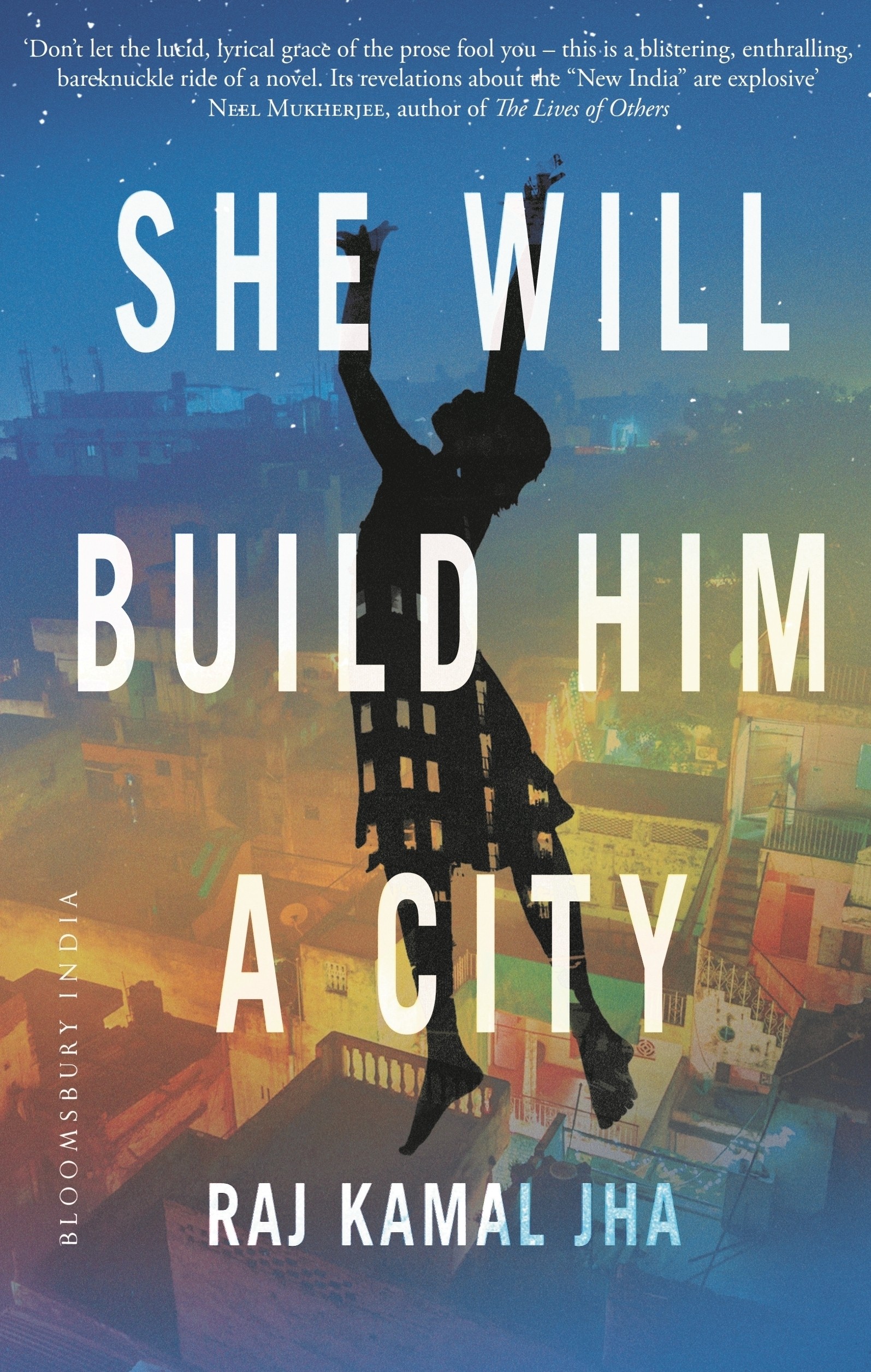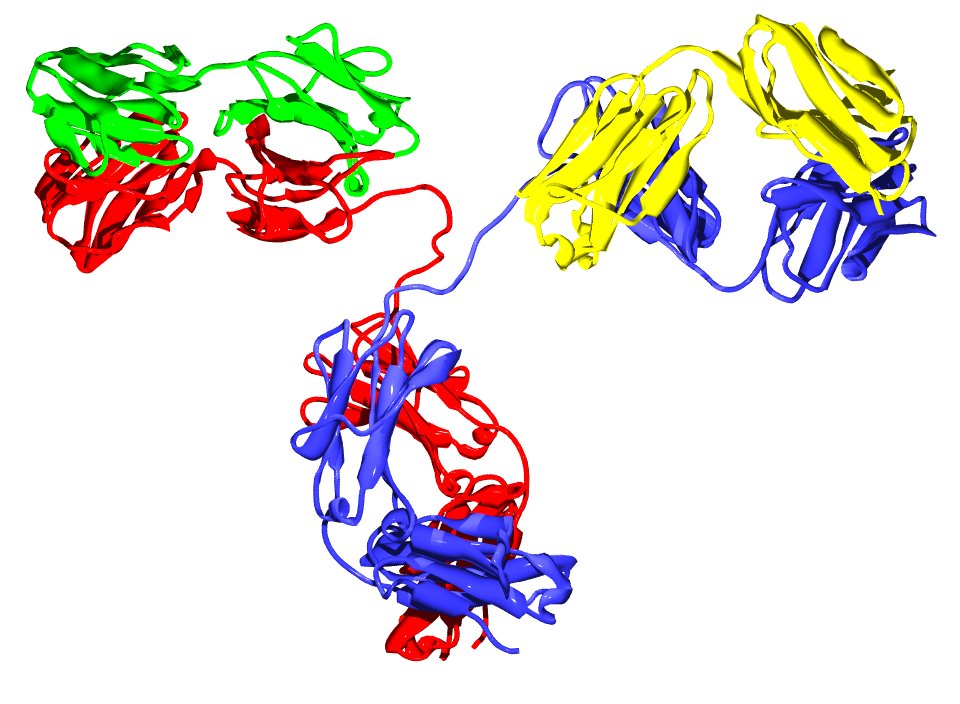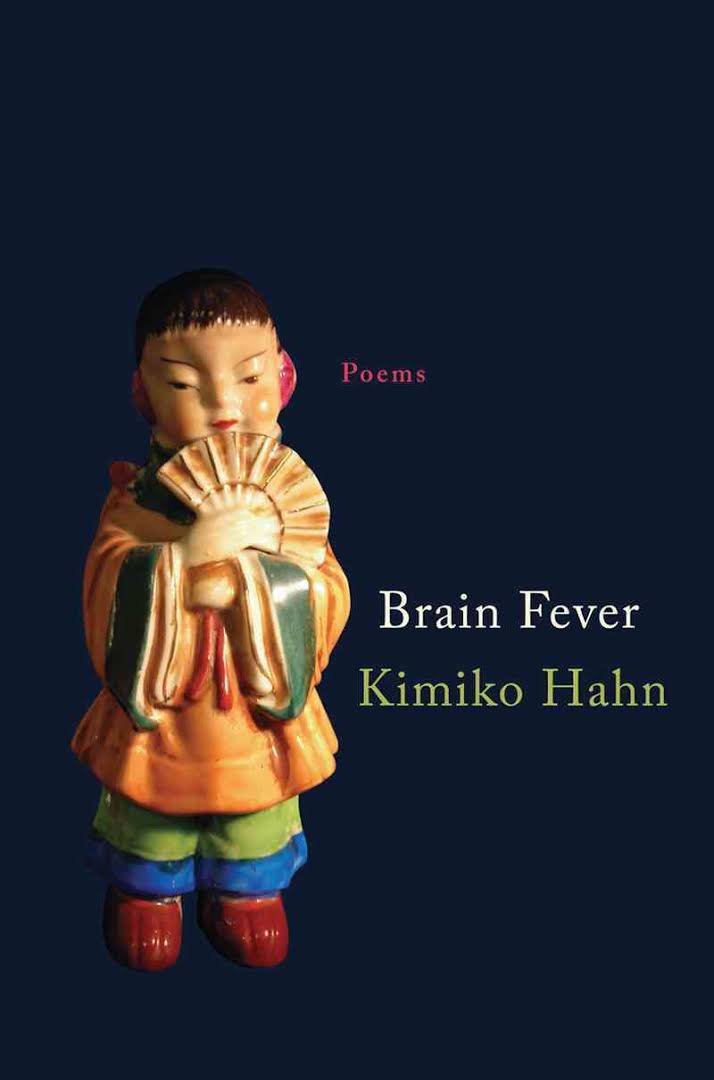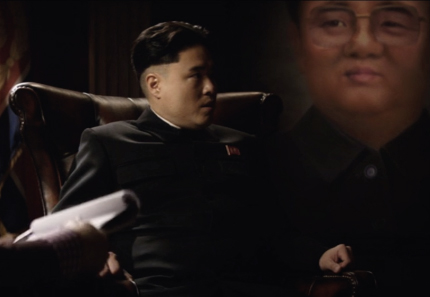Asian/American (Anti-)Bodies
Asian/American Antibodies: An Ending
. . . bodies and antibodies, dust and
blood, we are defined by what we will not take
into ourselves . . .
— Jorie Graham, "The Sense of an Ending"
As I argued in the introduction to this series, it's possible that one of the most significant obstacles to theorizing Asian American identity and culture today is the persistence of a false analogy between the black body subjected to violence and the Asian American body subjected to violence. This corporeal analogy is, to my mind, the emotional heart of the broader historical, political, and cultural phenomenon that Colleen Lye has called the "Afro-Asian analogy."1 If the political force and viability of Asian American identity has been in crisis since its beginnings2, then this has a great deal to do with how, as Lye argues, "the foundational status of antiblackness in conceptualizations of racism obstructs Asian Americanist endeavors to elaborate the nonderivative nature of Asian racialization."3 This is perhaps why the fractured, theoretically incoherent, and (at best) strategically essential fiction we call "Asian America" has only coalesced as a pan-ethnic Asian American community a handful of times in its history: most recently, and not without great controversy, in response to the case of former NYPD officer Peter Liang.4
The idea behind this series was to think of the Asian American body as both an empirical reality and as discourse, and to link its discursivity to an Asian American academic/intellectual class's longstanding commitment to executing two simultaneous operations: elaborating the "nonderivative nature of Asian racialization" and maintaining a politically viable narrative of racial grievance.5 Over the past twenty years or so, these operations have been pursued via framing the Asian American body in a poststructuralist ontology, culminating in theoretical topoi that Mark Chiang calls "nonrepresentative representation": the premier example of this being Kandice Chuh's provocative and useful description of Asian American studies as a "subjectless discourse."6
Each of the blog posts in this series has explored a version of the Asian-raced body that stands aside from the "Afro-Asian analogy" and its subjectless teleology (though not in opposition to it). Ragini Tharoor Srinivasan's reading of Raj Kamal Jha's She Will Build Him a City (2015) examined "coolie bodies" being devoured in the cannibalistic churn of desire sustaining the divisions of space and labor that open Delhi's hyperurban cityscape to global capitalism and nationalist imagining. Michelle Huang considered how the "synaptic poetics" of Kimiko Hahn's poetry collection Brain Fever (2014) suggest that Asian racialization might proceed not only via the referential relationship between body and racial concept, but "between the multiple interpretations that shape gaps in language." That is, the misfires and fuzzy logics that order and disorder our synaptic networks, and that nonetheless constitute the material history of what it might mean to "think" like an Asian. Andrew Leong's tracking of the trope of epiphoric epiphora—superabundant tears—mapped out a global network of media, capital, and commodity flows in which objects like the Toyota HiLux pickup truck take on a racialized life of their own, and thus complicate anthropocentric discourses like Asian American history and subjectivity. And Sunny Xiang demonstrated how Seth Rogan and James Franco's unserious film The Interview (2014) nonetheless sharply reveals a persistent corporeal logic governing American representations of, and foreign policy towards, North Korea: a logic that, moreover, shores up western liberal notions of the human—as opposed to Kim Jong-un's inhuman—body.
The great thing about the genre of the blog post is that it offers a space of provisionality, of play. At their best, blog posts inspire others to play along. That's certainly how I felt when reading and editing these articles, and my hope is that you, dear reader, have felt the same. In that spirit, even as the present article makes the gesture of concluding this series, it will offer no conclusions. These articles have covered a breathtaking range of historical, geopolitical, and cultural ground, but one question that perhaps remains is how an Asian American politics grounded in the materiality of the Asian-raced body might proceed without reference to the Afro-Asian analogy. Here I invite you to play along, just for a moment, with the idea of the Asian American antibody.
Antibodies are perhaps most familiar to us as agents of our immune systems that defend our bodies from "foreign" antigens like bacteria and viruses. In 1983, Avitall Ronell offered this impressive description of the antibody:
The antibody can be viewed, and is so viewed in medical texts, as a type of reactive warrior that comes riding in, or rather out, on a white blood cell to encounter or meet the call of an antigen. An antigen, normally, is a foreign substance in the blood stream. However, before the desired type of immediate reactivity on the part of the antibody can at all take place, the invading substance (be it endogenous or exogenous in origin) must in the first place be recognized and interpreted so that, for instance, the antibody-antigen complex can subsequently activate the rearguard action of phagocytes which then attack and devour foreign substances; or, more precisely, they attack and devour that which has been interpreted as foreign.7
The way antigens attack cells is by bonding to their surface protein receptors. Antibodies prevent this bonding by attaching to antigen receptors and then "tagging" the antigen to be attacked by phagocytes, which are cells that swoop in to kill antigens using a variety of methods like deploying lysozyme enzymes to break down a bacteria's cell walls.
Let's think about this in regard to the concrete example of recent activism around creating and funding Asian American studies programs and student services at a number of US colleges and universities (e.g., Brandeis, Cornell, Hunter College, U. Minnesota, Northwestern, Princeton, Yale).8 Students (mainly undergraduates), faculty, and staff at these institutions have been bravely and tirelessly organizing for years. Along with the administrators to whom they are appealing, there is a kind of tacit agreement that the university is a body that needs to be restored to health—even if there might be disagreement over what might be the antigens, and who might be the antibodies. From students' perspective, the university is a body in which Asian American students, and students of color more broadly, constitute an vital organ that has come under a kind of autoimmune attack by the antigens of racism, among others. The bodily metaphor is sustained by a tradition of describing and cathecting the university with a rhetoric of "family" (alma mater), "home," "community," and "belonging." Student activists frequently describe their efforts as "reclaiming" or "claiming" a place in the university.
However, this conception of the university as the body/telos of Asian American student activism has recently come into conflict with attempts by Asian American students to ally with the tremendous campus activism swirling about the #BlackLivesMatter movement. Asian American activists have begun to realize that they aren't always seen as racial subjects (either by their opponents or their allies), and that their concerns as Asian Americans can often be sidelined or ignored in deference to a more urgent struggle against antiblackness.9 An either-or structure emerges that is reflective not only of the vicissitudes and contradictions of current student activism, but, more fundamentally, of the Afro-Asian analogy's status as primarily a bodily analogy in which relative pain becomes the predominant determinant of value, and thus the predominant metric for gauging grievance, privilege, and voice.
We need not abandon the body to identify a possible solution to this impasse. Maybe the body isn't the problem here. To echo Rachel C. Lee's recent argument, Asian American studies' anxiety over the body might correlate more with anxieties over determinism and fixity than biology, per se.10 Following Lee's lead, some of the political/theoretical knots that hobble campus activism, and, by extension, Asian American theory, might be worked out by reconfiguring how we scale and position ourselves in relation to the bodily metaphor. Rather than assume that the university is the body being defended and restored to health, why not reverse the scale of things? Perhaps we—and by "we" I mean Asian Americans and non-Asian Americans alike—could think of the university as an organism bearing and replicating antigens that are infecting our body politic.11 These antigens would include racism, certainly, but really any hierarchy of difference and its supporting strategies of reification. Black and Asian bodies could then be thought of less as student bodies and instead as antibodies deployed in defense of a body politic that vastly exceeds the scale of any particular university community, and that, while ultimately unknowable, nonetheless presents a stable cognitive horizon.12
By adopting the epistemology of the antibody—that is, the extremely limited range of things that the antibody knows and can know—it might be possible to develop a more pragmatic solidarity that brackets some of the difficult questions that can get in the way of solidarity. Antibodies are only capable of remembering antigens. They are unable to know the totality of the body. Rather than proceed from strategic essentialism, the Asian American antibody might proceed from something like a strategic ignorance and singular focus. The epistemology of the antibody is forgiving. It relieves us of the burden of defining ourselves as a prerequisite for solidarity. As antibodies, our task is clarified: we are to "meet the call" of the antigen and tag it. I like Ronell's phrase because it allows for a range of resistance strategies. If we take the antibody metaphor literally—if we push back as much as possible, asymptotically if necessary, on its metaphoricity—then it becomes possible to open our thinking to resistant strategies that, at certain scales, don't necessarily even look like resistance, and that may even look like mimicry or complicity.13
Returning one last time to the articles in this series, it is possible to read them as antibodies that tag (that is, teach us to recognize) cultural logics as antigens: capitalism's fantasies of the unsullied, unracialized body (Srinivasan); biological conceptions of race that are reductive, as opposed to generative (Huang); the pernicious way that racial objects stabilize racial subjects, and vice-versa (Leong); and the rhetoric of the human in which the bodies of racial/geopolitical others are constructed as objects of ridicule and neoimperial desire, as well as "the last frontier for truth and authenticity" (Xiang). The Asian American-ness that emerges in these articles is always surprising, always rooted in the body, but never reductive or fixed. The Toyota HiLux, for instance, while defensible as an Asian American body, wouldn't make for a coherent or effective political identity. That doesn't mean the HiLux forecloses politics. Leong shows how the truck's current status as the vehicle of choice among terrorist organizations lays bare the autoimmune tendencies of American-style free market capitalism and its blowback effects. Reading the HiLux as a racialized Asian American body/object tags this contradiction as a vulnerability in global capitalism's smooth surface.
As we learn to recognize discourses like these as antigens, as trace memories that we retain in ourselves and that thus define us as always already infected, we become better able to undermine those forces that conspire against our unimaginable body politic.
References
- Colleen Lye, "The Afro-Asian Analogy," PMLA 123.5 (2008). [⤒]
- See, for instance, Mark Chiang, The Cultural Capital of Asian American Studies: Autonomy and Representation in the University (New York: NYU Press, 2009); Kandice Chuh, Imagine Otherwise: On Asian Americanist Critique (Durham: Duke University Press, 2003); Susan Koshy, "The Fiction of Asian American Literature," The Yale Journal of Criticism 9.2 (Fall 1996); Christopher Lee, The Semblance of Identity: Aesthetic Mediation in Asian American Literature (Stanford: Stanford University Press, 2012); Colleen Lye, "Racial Form," Representations 104.1 (Fall 2008); Viet Nguyen, Race and Resistance: Literature and Politics in Asian America (New York: Oxford University Press, 2002).[⤒]
- Lye, 1733.[⤒]
- Earlier this year, Liang was convicted of killing 28-year old Akai Gurley. Gurley was shot in the chest in 2014 when Liang accidentally fired his weapon in a stairwell and the bullet ricocheted. As Gurley bled to death, Liang and his partner argued over who would report the shooting to their supervisor. When Liang was convicted in February (he served no jail time), he became the first NYPD officer in over a decade to receive a conviction for an in-the-line of duty shooting. The case has torn Asian America apart. According to Jay Caspian Kang, "Many Asian-Americans [sic] felt that Liang had been offered up as a sacrificial lamb to appease the ongoing protests against police violence that started two summers ago in Ferguson, Mo," "How Should Asian-Americans Feel About the Peter Liang Protests?" New York Times Magazine, February 23, 2016. Pro-Liang protests, some exceeding 10,000 protestors, erupted in NYC in the days leading up to his conviction, and were some of the largest that Asian America has ever seen. Running counter to the pro-Liang voices were Asian Americans, including Vincent Chin's niece, who argued that Liang should not receive a more lenient sentence, and that comparisons between her uncle and Liang were offensive: "Vincent Chin," she wrote, culminating the Afro-Asian analogy underlying her argument, "has far more in common with Akai Gurley than Peter Liang," "Peter Liang Was Justly Convicted—He's Not A Victim, Says This Niece of Vincent Chin," Medium.com, February 22, 2016.[⤒]
- Anne Cheng offers our most important critique of grievance as an overly privileged mode for expressing racial experience. See The Melancholy of Race (New York: Oxford University Press, 2001).[⤒]
- Chiang, 12. Chuh, 9.[⤒]
- Avital Ronell, "Queens of the Night: Nietzsche's Antibodies," Genre 16 (Winter 1983): 410, original italics.[⤒]
- An excellent recent overview of these efforts has been produced by Mark Tseng Putterman, "What Asian Americans Are Bringing to Campus Movements for Racial Justice," Race Files, February 1, 2016.[⤒]
- Kevin Cheng, "What Role Do Asian Americans Have in the Campus Protests?" The Atlantic Monthly, December 8, 2015.[⤒]
- Rachel C. Lee, The Exquisite Corpse of Asian America: Biopolitics, Biosociality, and Posthuman Ecologies (New York: New York University Press, 2015), 11.[⤒]
- A comparison here might be drawn with Asian American studies' original institutional form, which came out of the Third Worldist student movements of the late-1960s. There, students conceptualized their body politic as a global, Third World body politic that far exceeded any given student body. A broader body politic was also imagined at a more local level via student demands for "community autonomy," in which the non-university communities surrounding San Francisco State College and UC Berkeley, where the protests were taking place, would be vested with governing authority over ethnic studies departments, thus creating what Mark Chiang calls "dangerous site[s] of heteronomy in the university" that simultaneously embrace and undermine ethnic studies' institutionalization, 59.[⤒]
- Though I am more sanguine about the university's role in consciousness-raising and cultivating critique, what comes to mind here is the reversal of value underlying Fred Moten and Stefano Harney's rejection of the university as an institution worth reforming, and Robin D. G. Kelley's extension of their argument through his claim that "the triumph of multiculturalism [which is what many student demands amount to] marked a defeat for a radical anti-racist vision." See Moten and Harney, "The University and the Undercommons: Seven Theses," Social Text 79 (Summer, 2004); and Kelley, "Black Study, Black Struggle," Boston Review, March 7, 2016.[⤒]
- We all know how vaccines work: When fighting off a new antigen, the immune system retains a copy of the antigen (in the form of memory B cells) so that it can identify that antigen in the future. The antigen's "foreign" status is only established in the antibody's uncanny recognition of the other within the self. At the very site of the body's self-definition, in other words, there is no stable distinction between self and other. Now consider this passage from Viet Nguyen's book Race and Resistance that describes a similar process, vis-à-vis whiteness: "The sudden appearance of wealthy Asians [in the US] displaces this assumption that traditional whiteness is associated with wealth and that both whiteness and wealth are to be earned over the passage of time. By putting traditional whiteness into crisis, the new Asian capital also puts Asian America as a whole—not just the model minority—into crisis in its efforts to claim a domestic authenticity that does not threaten whites," 22. It is precisely in their complicity with and uncanny mimicry of whiteness via class that "wealthy Asians" put "traditional whiteness into crisis," heightening its contradictions.[⤒]



